- Site Navigation

|
 |
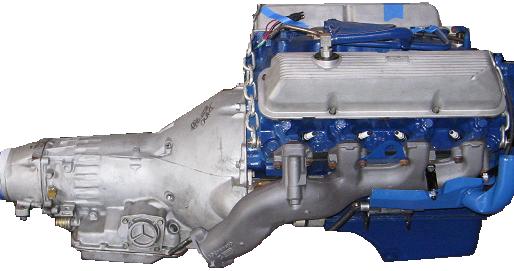
The "Q" in Q-vert derives from the vehicle identification number - 9F94Q502794. That "Q" in the VIN designates the 428 cubic inch CobraJet engine with a Holley four barrel carburetor breathing 735 cubic feet per minute. Officially rated at 335 brake horsepower, rumor has it that Ford understated the power in a futile attempt to deceive insurance underwriters.
The engine is massive. Getting it squeezed into a pony car engine bay takes some talent. If, like me, you lack talent, try persistence.
The 428CJ & C6 Transmission combo is a pig to install. Before tackling the job, I read postings at the CJ forum, the article on the dearly departed The Classsic Cougar Network website, studied the shop manual, etc. A lot of folks say the whole assembly will slide right in with the passenger side exhaust manifold in place. We ended up removing it half way through the job.
First step is getting the engine off the stand and connected to the transmission
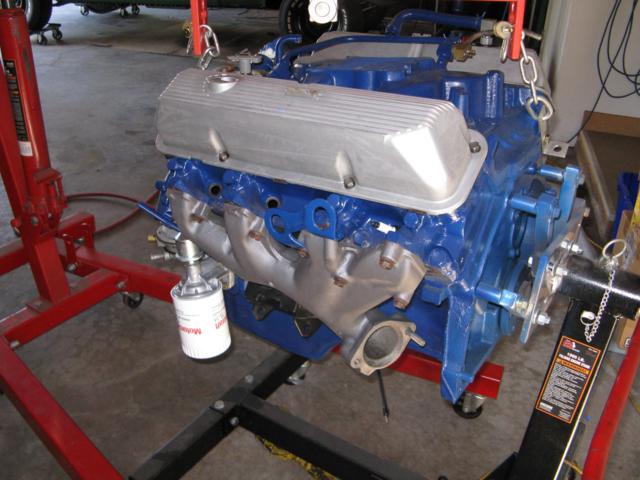
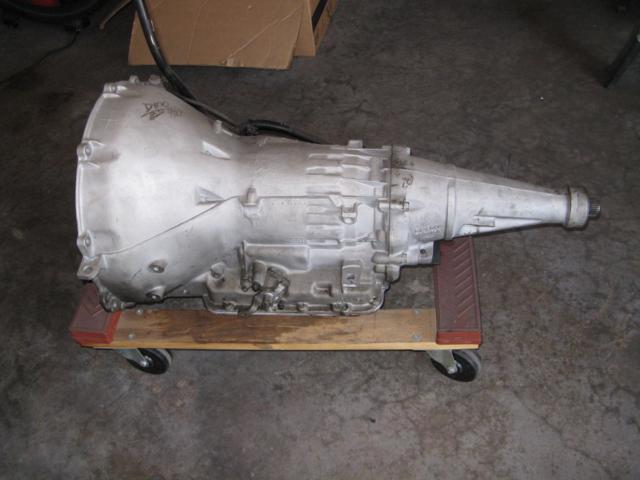
Truth be told, we actually failed on the first attempt at installation. The first go-around, we tried installing the engine and transmission separately. Both went in without much trouble. Getting them aligned and connected to each other, however, proved to be more than we could muster. So, we pulled them back out and attached the transmission to the engine and set ourselves to installing them as a unit. Here is Kevin when we realized that the engine leveler's handle should face away from the crane. You learn stuff like this when you install an engine for the first time.
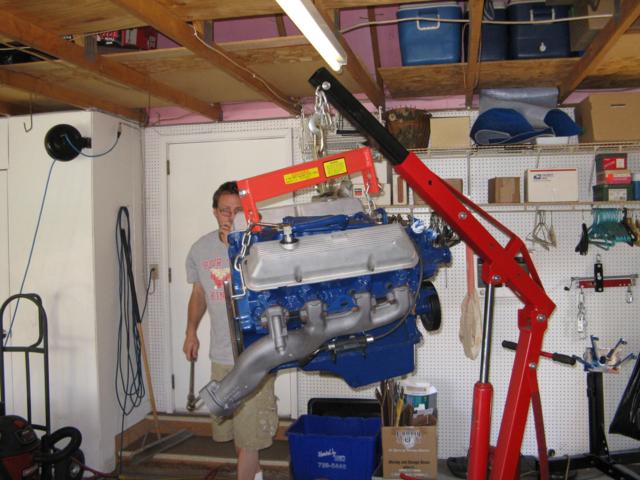
Onto the second attempt. Towels in place to protect the engine compartment paint.
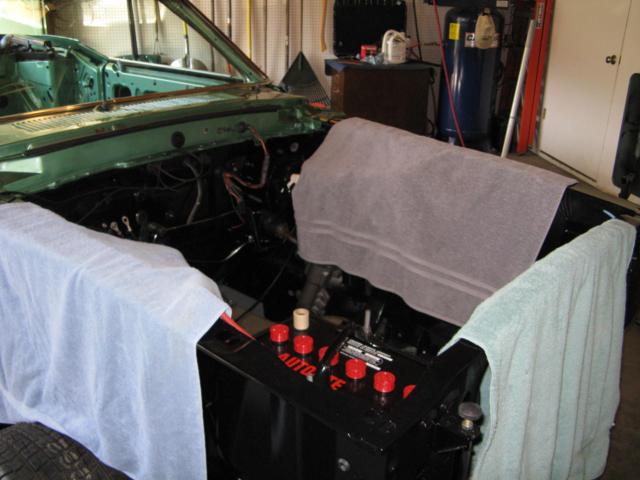
Shane is seen here thinking this job will be easy:
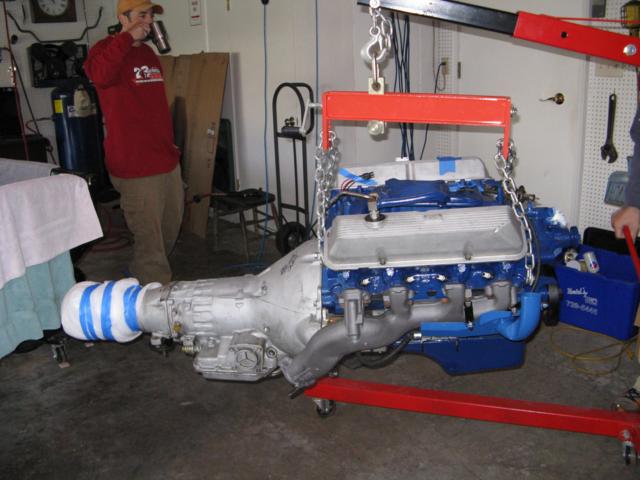
A lot of weight up in the air:
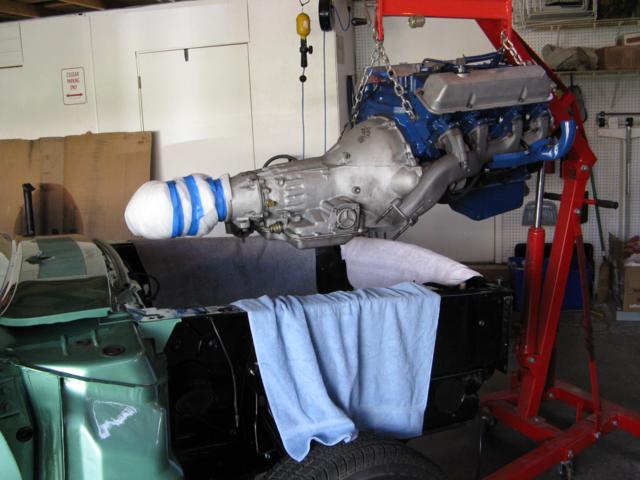
Everything was looking good at this point. Looked like it would slide right in, just like people said on the internet:
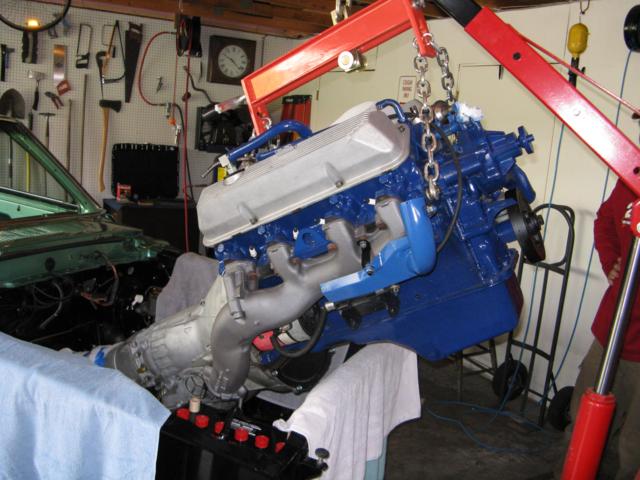
Got to this point and tried everything to squeeze her in without success.
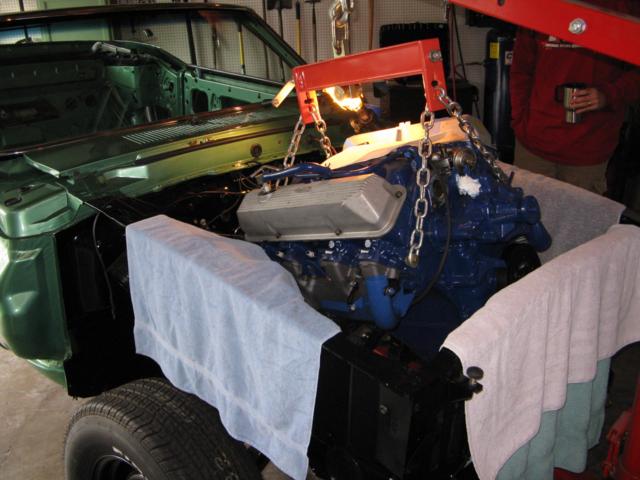
Clearance problem was the 'bump' on the manifold at the number 4 cylinder. When it was at the back side of the shock tower, the driver's side manifold would wedge on its side. We tried turning the engine to the sides, tried increasing the angle of entry, tried lowering the rear of the car, tried raising the rear, even tried lifting the passenger side of the engine with a come-a-long strapped to the rafters trying to get a little more clearance. It was always just a matter of millimeters. We ended up taking the right manifold off - just couldn't get by the shock towers with it on. After removing it, we positioned the manifold under the engine, kind of where it would end up after the engine was in place. Got the engine down onto the mounts, and the transmission mount in place, then lifted the engine a few inches to get at all the manifold bolts. Had to use three different styles of wrenches to get them all tightened back up....
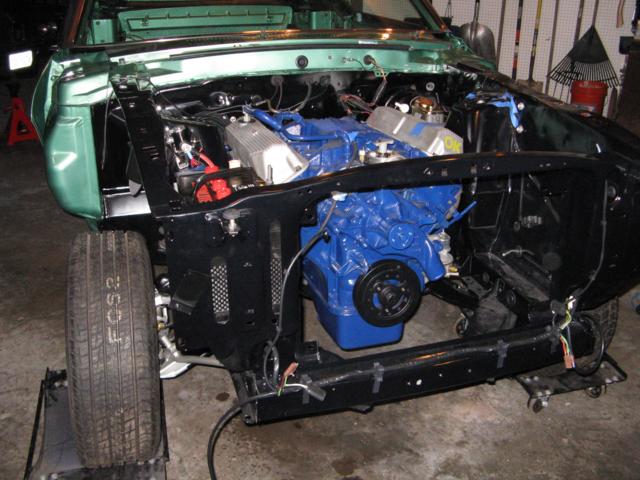
With the engine in place, next came the carburetor, alternator and power steering pump.
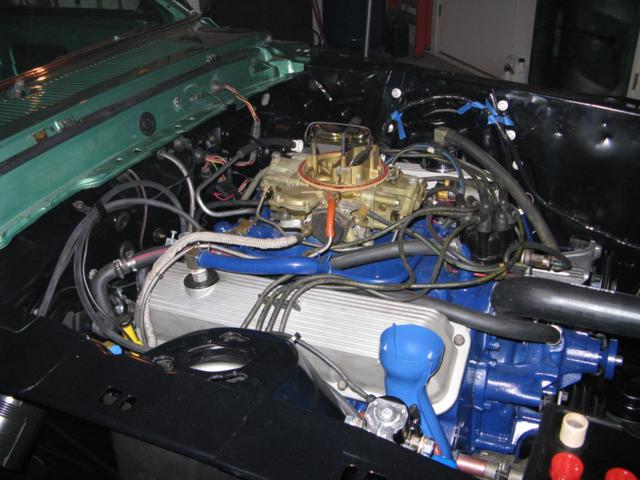

This seemed like a good time to install the one-piece shock tower brace, along with the shock absorbers. The original brace was two pieces. The one-piece "export" brace is an aftermarket item originally used on Shelby Mustangs back in the 60's. It stiffens up the front end and is supposed to make a noticeable improvement in handling.
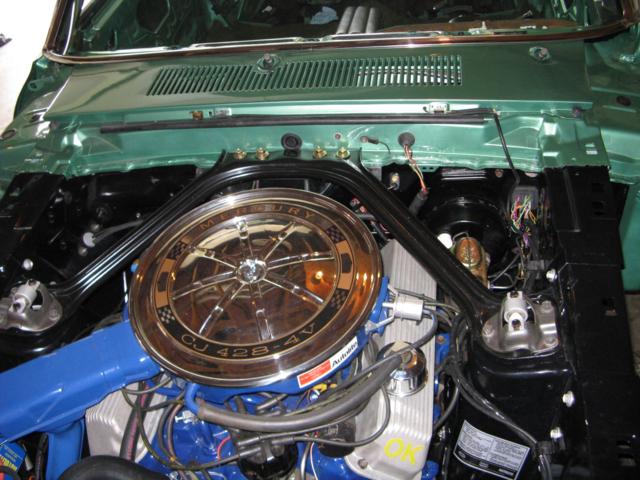
All it needed then was the radiator, fan, belt and hoses.
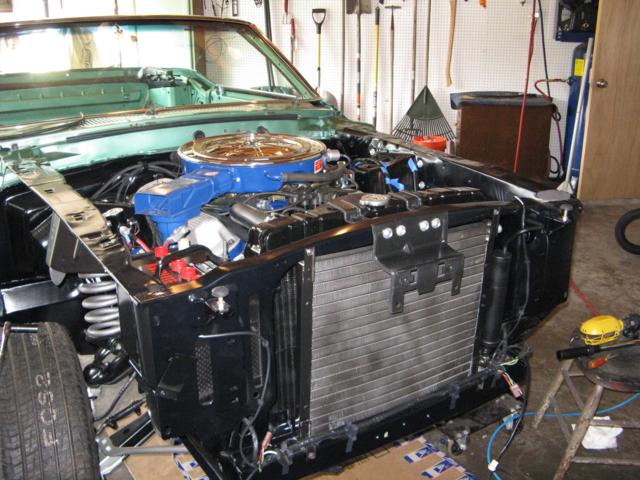
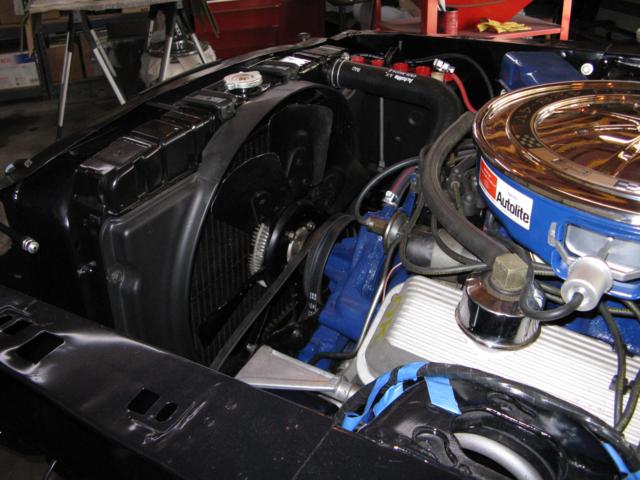
Sure looks pretty.
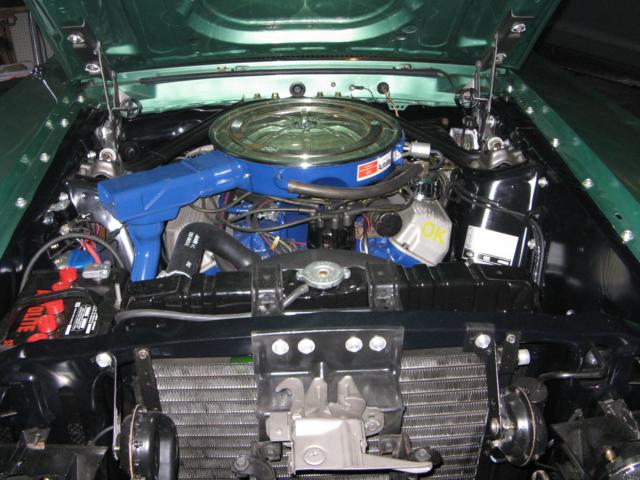
Here's a video clip of the first running of the engine since it was reinstalled. That tambourine noise is from loose j-nuts on the rock guard and front valence. It will go away once the fenders are bolted on.